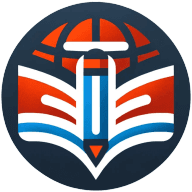6 Addressing Learning Gaps in the Classroom: Effective Resources
Discover practical approaches to addressing learning gaps through targeted classroom resources, including the effective use of micro-loops for immediate feedback. This comprehensive guide brings together expert insights on identifying and bridging educational disparities with proven methodologies. Educators will find actionable strategies to help students overcome learning challenges and achieve academic success.
Using Micro-Loops for Immediate Feedback
At Legacy, one of the best ways we have closed learning gaps is with micro-loops of feedback. Instead of waiting for larger assessments, we introduced short, informal check-ins after each module: short quizzes, reflective prompts, or even five-minute chats.
For example, during a writing unit, we noticed that several students were struggling with thesis statements. Instead of forging on, the teacher added a micro-lesson midweek and used breakout rooms to zero in on that skill. They also included peer reviews and quick video feedback on common errors in order for students to make changes asap.
Within two weeks, thesis scores were up by around 30%, and because students were more confident, they participated with more freedom. Teachers were also able to see patterns of struggle early, and plan some upcoming lessons based on the issues the students faced.
The reality is this: learning gaps do not have to be major to cause us to stall learning. Small moments of misunderstandings can add up and compound quickly. We have to recognize when they happen early in a lesson and deal with them live; otherwise the support feels like a loss of momentum.

Implement Data-Driven Assessment Strategies
Data-driven assessments provide concrete information about exactly where students are struggling in their learning journey. Regular formative evaluations help teachers pinpoint specific skill deficiencies rather than making broad assumptions about student understanding. When educators analyze assessment data systematically, patterns emerge that can inform targeted interventions before small gaps become major obstacles.
The feedback loop created through consistent assessment helps teachers adjust their instruction in real-time rather than waiting until unit tests or semester exams reveal problems. These assessments work best when they focus on measuring growth over time rather than simply comparing students against arbitrary benchmarks. Start gathering meaningful assessment data today to transform how you identify and address learning gaps in your classroom.
Adjust Instruction to Meet Diverse Needs
Differentiated instruction allows teachers to meet the varied needs of all students in a classroom environment. By adjusting content, processes, and learning environments, educators can address specific gaps that students may experience during their educational journey. This approach recognizes that students learn at different paces and through different methods, making it essential for closing achievement gaps effectively.
Teachers who implement differentiated instruction create multiple paths to understanding, ensuring that struggling learners receive additional support while advanced students remain challenged. Classroom success rates improve significantly when instruction matches individual student readiness levels and learning preferences. Consider implementing at least one differentiated strategy in your next lesson plan to better support all learners in your classroom.
Create Focused Small Group Intervention Sessions
Small group interventions create focused learning environments where students with similar needs can work together to strengthen foundational concepts. These targeted sessions allow teachers to use specialized techniques and materials specifically chosen to address particular skill deficiencies identified in the classroom. Students often feel more comfortable asking questions and taking risks in smaller settings than they might during whole-class instruction.
The concentrated attention during small group work accelerates learning by providing more opportunities for practice and feedback in areas where students need additional support. Research consistently shows that properly implemented small group interventions can help struggling students catch up to their peers more quickly than whole-class remediation attempts. Begin restructuring your classroom schedule to incorporate regular small group intervention sessions for maximum impact on student achievement.
Leverage Technology for Personalized Learning Paths
Technology platforms create personalized learning paths that adapt to each student's specific needs and progress rate. Digital tools can automatically identify areas where students struggle and provide additional practice opportunities without requiring teacher intervention for every challenge. These adaptive programs often engage students through interactive elements that make addressing learning gaps feel more like play than remediation work.
The immediate feedback provided through educational technology helps students correct misconceptions quickly rather than practicing incorrectly for extended periods. Technology integration also frees teachers to work more intensively with students who need human guidance while others work independently at their level. Explore available educational technology options for your subject area to find tools that can help customize learning experiences for your students.
Offer Multi-Modal Materials for All Learners
Multi-modal materials accommodate various learning styles by presenting information through different sensory channels and engagement methods. When concepts are taught using visual, auditory, kinesthetic, and tactile approaches, students have multiple opportunities to connect with the content regardless of their preferred learning mode. These diverse materials help bypass learning barriers by offering alternative routes to understanding key concepts that might be missed through traditional teaching methods alone.
Teachers who incorporate multi-modal resources find that more students demonstrate mastery because the content becomes accessible to a wider range of learning preferences and abilities. The flexibility of these materials allows students to build on their strengths while gradually developing competency in less comfortable learning modes. Survey your current teaching materials to identify gaps in modality options and seek resources that will provide more diverse learning experiences for your students.

